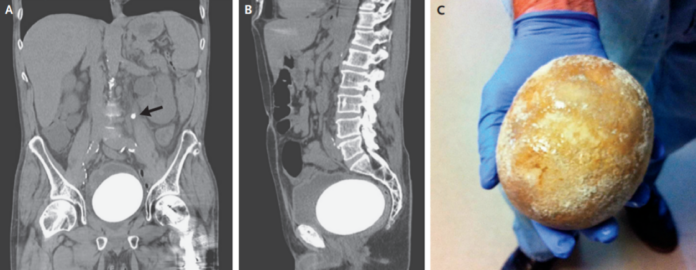A case of Bladder Stone after Invasive Surgery Bladder Cancer
A 64-year-old man presented to the emergency room with the complaint of pain in the left flank region. He also had problems with urination, which is a common sign of bladder stones.
History & Investigation
On examination, the doctors observed tenderness in the left flank. His medical history revealed that a decade ago he had developed invasive bladder cancer. For its treatment, the doctors had performed radical cystectomy and bladder reconstruction, known as “neobladder”. His bladder was constructed using parts of his intestine.
Moreover, the doctors did a CT scan of the abdomen and pelvis, which showed a stone in the ureter, as well as one in the urinary bladder. The bladder stone measured 12 cm by 9.5 cm by 7.5 cm and weighed 770 g. It was approximately the size of an ostrich’ egg!
Predisposing Factors
The predisposing factors of the large stone formation are urinary stasis, increased formation of mucus, and the sutures used to reconstruct the bladder. However, the main underlying factor that led to the stone formation was the use of segments of the patient’s intestine for reconstruction. This procedure led to an increase in the bicarbonate and oxalate loss in the urine. Furthermore, it caused the growth of bacteria in the urinary tract. It was the leading cause of the stone in the bladder, which was composed of 20% struvite and 80% calcium phosphate.
Treatment
The doctors performed a neo cystolithotomy to remove it from the urinary bladder. This involves making an incision in the abdominal wall to access the bladder and removing the stone from it. Furthermore, they removed the stone from the ureter using laser lithotripsy.
The patient experienced no postoperative complications. However, the doctors asked him to follow up frequently to monitor him for recurrence.




